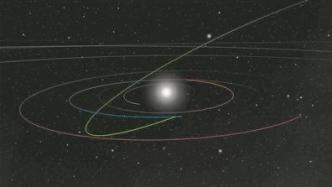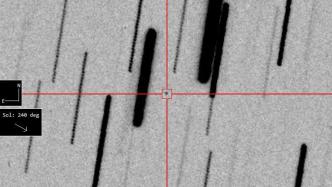
NASA said on October 11, local time, that after about two weeks of observations, the agency confirmed that its "Double Asteroid Redirection Test (DART)" spacecraft successfully landed the asteroid "Dimophos" "(Dimorphos) crashed off its original orbit.
At 19:14 on September 26, NASA's DART spacecraft weighing about 570 kilograms successfully collided with the asteroid "Dimophos" at a speed of about 22,530 kilometers per hour. Dimorphos is about 160 meters in diameter and orbits the asteroid Didymos, which is about 780 meters in diameter. Neither asteroid poses a threat to Earth, NASA said. The mission is NASA's first attempt to move an asteroid in space to demonstrate the feasibility of changing the orbit of an asteroid to protect Earth through "kinetic impactor technology."
"Dimofus" originally orbited "Didymus" once every 11 hours and 55 minutes. After being hit by the DART spacecraft, this orbital period may be shortened, which means that the orbit of "Dimofus" may be shortened. change. However, after the impact, it will take a period of observations for researchers to determine the actual effect of the DART mission.
For the past two weeks, researchers have been using telescopes to confirm whether the orbital period of Dimovers has changed. On the 11th, NASA confirmed that the spacecraft's impact shortened the time it took "Dedymos" to orbit "Didimos" by 32 minutes. NASA said the measurement had a margin of error of about plus or minus 2 minutes.
According to NASA standards, the minimum requirement for a successful DART mission is to change the orbital period of the target asteroid by 73 seconds, which means that the actual effect of the DART mission exceeds NASA's minimum standard by 25 times.


